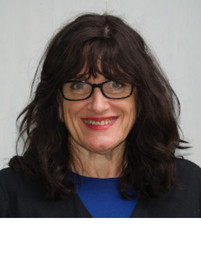Creating Communities in Hybrid Classes
Classroom communities have a positive influence on student behavior and performance. Next to homes, schools are where students spend most of their time. This makes it important for schools, especially classrooms, to focus on being a community, making students feel included, valued, and connected to each other. Is creating communities in hybrid classes possible?
Yes! Classroom communities are critical during the COVID-19 pandemic. A strong, safe and positive classroom community can help students by:
Improving academic performance: An inclusive classroom community understands and accepts that every student is unique and different. In these classrooms, teachers plan and differentiate instructions and pedagogy to address the learning needs of every student. Acceptance of each student’s individuality instills students with a sense of security and confidence, motivating them to work harder and perform better.
Encouraging students to overcome fears: Fear of judgement, reprimands, and making mistakes can cause students to be hesitant and cautious about actively participating in class. In a positive classroom community, these barriers can be overcome when mistakes are accepted as part of the learning process. Positive thinking can help students overcome their inhibitions and fears and actively participate in online activities.
Increasing accountability: The keywords of classroom communities are collaboration and partnership. Teachers and students work together toward attaining their teaching and learning goals, and establishing class rules and responsibilities. This helps to increase student accountability regarding compliance to rules, resulting in demonstration of acceptable classroom behaviors.
Modeling positive qualities: When classroom communities model qualities of nurturing, respect and understanding, students are better able to apply these qualities in their lives. Students learn to be tolerant of other perspectives, to communicate and collaborate with peers, and to treat people with kindness. Students begin to value and respect themselves and to prevail against obstacles including bullying and hazing.
Here are some ways teachers can create classroom communities in virtual or hybrid classes:
- Start on a positive note: Start every class on a positive note, be it a cheerful greeting, using a motivational quote or a funny anecdote.
- Know your neighbors: It is important that both teachers and students know each other. A simple way of getting to know each other is to pair up (teachers included). Students can be instructed to spend the next minute talking to their partners and learning new information about their peers. This activity can be repeated a few times at the start of the school year to help students get to know one another.
- Encourage mentoring: Encourage students to help each other by creating peer mentoring programs. Mentoring groups can help students connect, communicate, interact and collaborate with each other, while simultaneously sharing information and supporting academic growth.
- Model positive behaviors: Children often learn by imitation, therefore, it is crucial that teachers demonstrate the positive behaviors that they want to see in their students. For instance, students may learn to be “good listeners” by observing the verbal and nonverbal communicative practices of their teacher.
- Reinforce achievements: Teachers can help students develop their confidence by reinforcing their achievements. Achievements may not always be academic and teachers can help students find pride in their talents.
Creating communities in hybrid classes provide a safe and secure environment in which students are nurtured, inspired, motivated. Learn more with the online PD course: Hybrid Classroom Planning.
July 2020 Editor’s Note: This post was originally published in July 2015 and has been updated for accuracy and comprehensiveness.
 About the Author
About the Author
Ellen Paxton is a respected expert in education and best known as the Chief Learning Officer of Professional Learning Board. As a two-time National Board Certified Teacher, Ellen has successfully published and customized online professional development courses and Learning Management Systems for 20 years to help teachers meet their state continuing education renewal credit requirements. Through ProfessionalLearningBoard.com, RenewaTeachingLicense.com, and ConnectedPD.com. Ellen has established solutions and maintained partnerships with several accredited universities, higher education institutions, teachers’ unions and state Departments of Education while setting strategic direction that makes a difference and overseeing implementation of popular online PD.

Comments are closed.